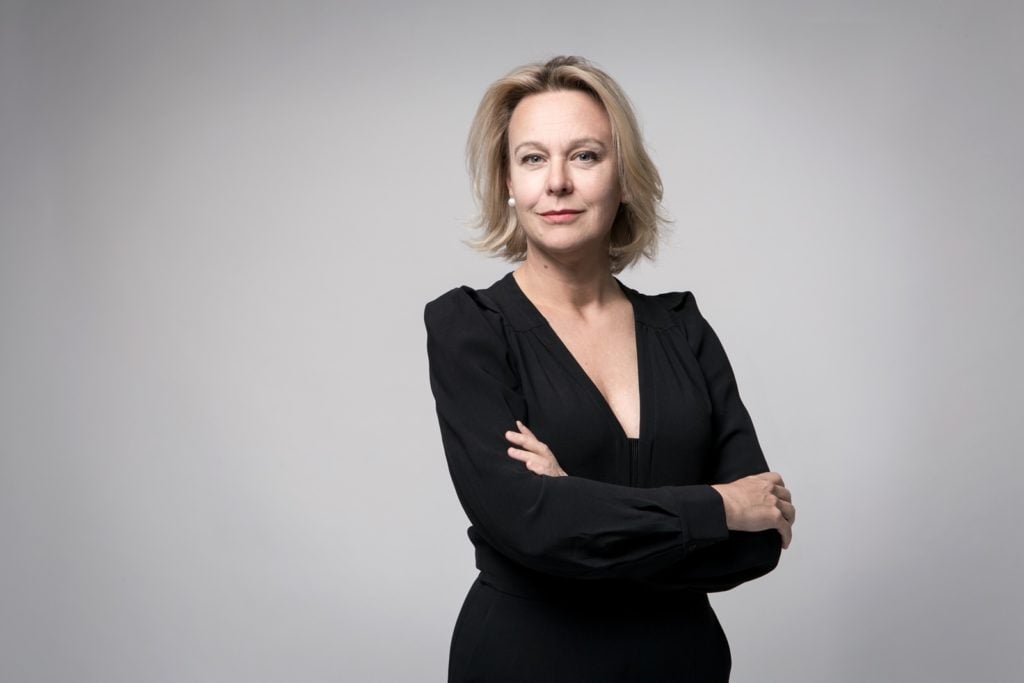People
The Head of Sotheby’s Closely Watched Artist Estate Service Makes a Surprising Exit After Just 18 Months
Christy MacLear, the former head of the Rauschenberg Foundation, was tasked with building up the new division of Art Agency, Partners.

Christy MacLear, the former head of the Rauschenberg Foundation, was tasked with building up the new division of Art Agency, Partners.

Eileen Kinsella

Less than two years ago, Christy MacLear made waves in the art world when she announced that she would leave her role as head of the Robert Rauschenberg Foundation to join Sotheby’s art advisory arm Art Agency, Partners as vice chairman. She was tasked with beefing up its advisory service for artists’ estates and foundations, an initiative some said had the potential to disrupt the art business. But after roughly 18 months, MacLear has abruptly left her post.
It remains unclear exactly what prompted MacLear’s departure, which was first reported by ARTnews. “The business is moving forward in several directions in a healthy way—we are just beginning a second phase consultancy for several prominent artists of different generations regarding major museum placements; gallery affiliations; funding programs; and long-term legacy planning,” Allan Schwartzman, the co-founder of Art Agency, Partners (AAP), said in a statement to artnet News. “There is increasing demand for our artist advisory services.”
AAP’s artists’ estate advisory division was designed to help increasingly wealthy artists plan for the future, assist trustees of artists’ estates in developing strategies to effectively carry on an artist’s legacy, and advise existing artist foundations on how to develop or expand their programming.
During her brief tenure, MacLear’s team reportedly signed on more than a dozen clients, including the estate of sculptor Robert Graham. In February, Pace Gallery and AAP announced that they would co-represent the estate of boundary-pushing artist Vito Acconci. The arrangement marked relatively new territory for the art trade, given that auction houses and galleries often compete to carve out previously underdeveloped areas of the market. Most recently, artist couple Eric Fischl and April Gornik revealed that they were working with AAP to establish their own foundation in Eastern Long Island.
It is unclear how these partnerships will evolve following MacLear’s departure. We understand that representation of the Acconci estate will now be overseen by Pace Gallery independently, while AAP will continue to provide guidance to Fischl and Gornik as they prepare to convert a local church into an art center and artist residency operated by their foundation.
“My time at AAP was fruitful in helping to confirm the need for this service—advising artists on their foundations and assisting families in the management of the artists’ estates,” MacLear told artnet News in a statement. “I have decided that I can serve the artists and their families better independently and, after my non-compete, will look forward to that. It is my honor, always, to work with artists.” (The duration of her non-compete is still under negotiation, she said.)
Prior to joining the Rauschenberg Foundation in 2010, MacLear served as executive director of the Philip Johnson Glass House in Connecticut.
In a statement, a spokesperson for Sotheby’s said the auction house has a “strong team” under the leadership of Schwartzman and Melissa Levin, the vice president of artists, estates, and foundations at AAP. “As with all parts of our business, we will continuously evaluate our needs to ensure we have the right recipe for success.” The spokesperson added: “We are grateful for Christy’s leadership as we expanded our advisory services… and wish her much success in her future endeavors.”
MacLear’s move from the non-profit sector to the for-profit side of the art world was greeted with both optimism and skepticism. When the initiative was first announced, Phillips CEO Ed Dolman said the prospect of an auction house handling an artist’s estate—which has traditionally been the territory of galleries—posed “an inherent conflict of interest.”
The business of operating artists’ estates is undeniably growing—and increasingly lucrative. In 2010, the Aspen Institute reported that assets held by artists’ estates and foundations had grown 360 percent in the previous 15 years, to a total of $3.48 billion.